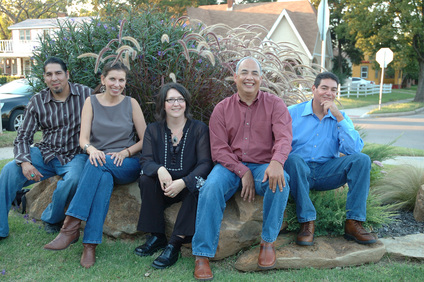About
Traditional Native healers call illness “dis-ease”, referring to the imbalance between the body and the spirit. Many contemporary indigenous people suffer from multi-generational illnesses that are easily attributed to the long reaching impact of institutionalized racism. Forced government practices like removing children from family and culture to be assimilated in boarding schools stripped many native people of their sense of tribal identity; the philosophy of “Kill the Indian, Save the Man" was enforced, sometimes brutally, on a daily basis. Other policies like federal relocation isolated rural Indian families, placing them in cities far from tribal support or means of self-sustenance. Government commodities are still being used today by many families living at poverty level- these processed foods have been directly linked to diabetes, obesity and high blood pressure.
The denying of one’s culture (and consequently, one’s self) comes at a huge cost: anger, frustration and despair contribute to the staggering statistics of alcoholism, domestic abuse, drug addiction and suicide so rampant among native communities. Physical ailments abound, many of which are chronic reminders of the “dis-ease” that plagues contemporary Indigenous people. But in Oklahoma City, a group of five established Native American artists have partnered to help heal in an untraditional way, using their work as the Urban Indian 5.
The images created by these five innovative artists who create with the intent to help people shed historical trauma. The artwork is not only aesthetically pleasing to the eye, but has the power to inspire wellness. The artists officially recognize the negative impact created by historical trauma and the way powerlessness can manifest into illness. Each Urban Indian 5 artist portrays his or her traditional life interwoven with modern everyday lives. Each artist works from a deep understanding of his or her tribal traditional and ceremonial beliefs. The importance of traditional ceremonies and cultural tradition are vital elements of Native life both on the reservation and in the urban setting. No longer are native people hunter-gatherers. They punch a clock everyday doing mundane jobs in an ever-changing fast paced society.
Traditional healers used sacred songs to call spirit helpers who aided in the healing process. The paintings, prints, and photographs bring people to the places where these ceremonies have taken place.
The denying of one’s culture (and consequently, one’s self) comes at a huge cost: anger, frustration and despair contribute to the staggering statistics of alcoholism, domestic abuse, drug addiction and suicide so rampant among native communities. Physical ailments abound, many of which are chronic reminders of the “dis-ease” that plagues contemporary Indigenous people. But in Oklahoma City, a group of five established Native American artists have partnered to help heal in an untraditional way, using their work as the Urban Indian 5.
The images created by these five innovative artists who create with the intent to help people shed historical trauma. The artwork is not only aesthetically pleasing to the eye, but has the power to inspire wellness. The artists officially recognize the negative impact created by historical trauma and the way powerlessness can manifest into illness. Each Urban Indian 5 artist portrays his or her traditional life interwoven with modern everyday lives. Each artist works from a deep understanding of his or her tribal traditional and ceremonial beliefs. The importance of traditional ceremonies and cultural tradition are vital elements of Native life both on the reservation and in the urban setting. No longer are native people hunter-gatherers. They punch a clock everyday doing mundane jobs in an ever-changing fast paced society.
Traditional healers used sacred songs to call spirit helpers who aided in the healing process. The paintings, prints, and photographs bring people to the places where these ceremonies have taken place.

